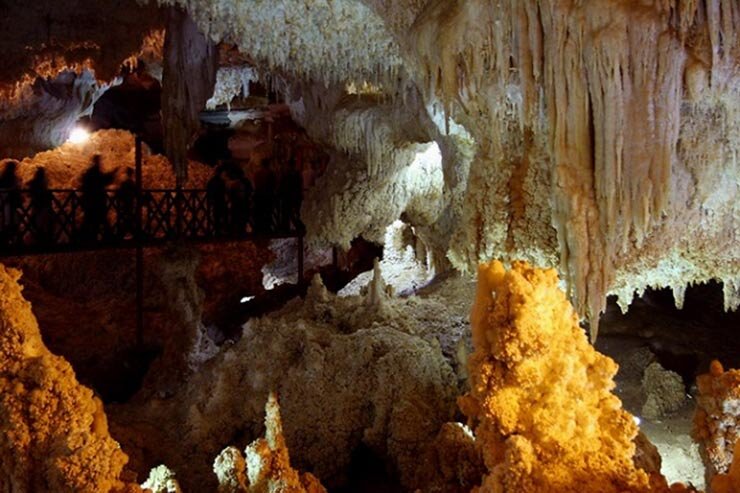Lightning, infrastructure improved at Jurassic-era cave

TEHRAN –Lightning and necessary infrastructure have been improved at Katale-Khor tourist cave, which is believed to date from the Jurassic times (199.6 million to 145.5 million years ago) in north-central Zanjan province.
Some 300 projection lights have been installed on the first floor of the cave during a two-month project, CHTN quoted provincial tourism chief Amir Arjmand as saying on Saturday.
With a budget of 3 billion rials (about $71,000 at the official rate of 42,000 rials), the project also included rebuilding access roads to the cave and installing information boards inside and outside the cave, Arjmand said.
Katale-Khor’s interior space embraces huge hallways, corridors, and millions of stalagmites and stalactites, which are impressively lit by flashlights.
Some three-seventh of the prolonged cave have been explored so far. About three kilometers length of the cave is open to the public while another four kilometers is accessible to experienced cavers and researchers.
Literally meaning “Mountain of Sun”, Katale-Khor bears lots of natural and artificial changes during this lengthy period. The cave was reportedly discovered some seven decades ago by a group of Iranian cavers.
Iran is geologically a part of the Alpine-Himalayan organic belt. According to Britannica Encyclopedia, the enigmatic evidence of human presence on the Iranian plateau is as early as Lower Paleolithic times.
The first well-documented evidence of human habitation is in deposits from several excavated cave and rock-shelter sites, located mainly in the Zagros Mountains of western Iran and dated to Middle Paleolithic or Mousterian times (c. 100,000 BC).
ABU/AFM/MG
